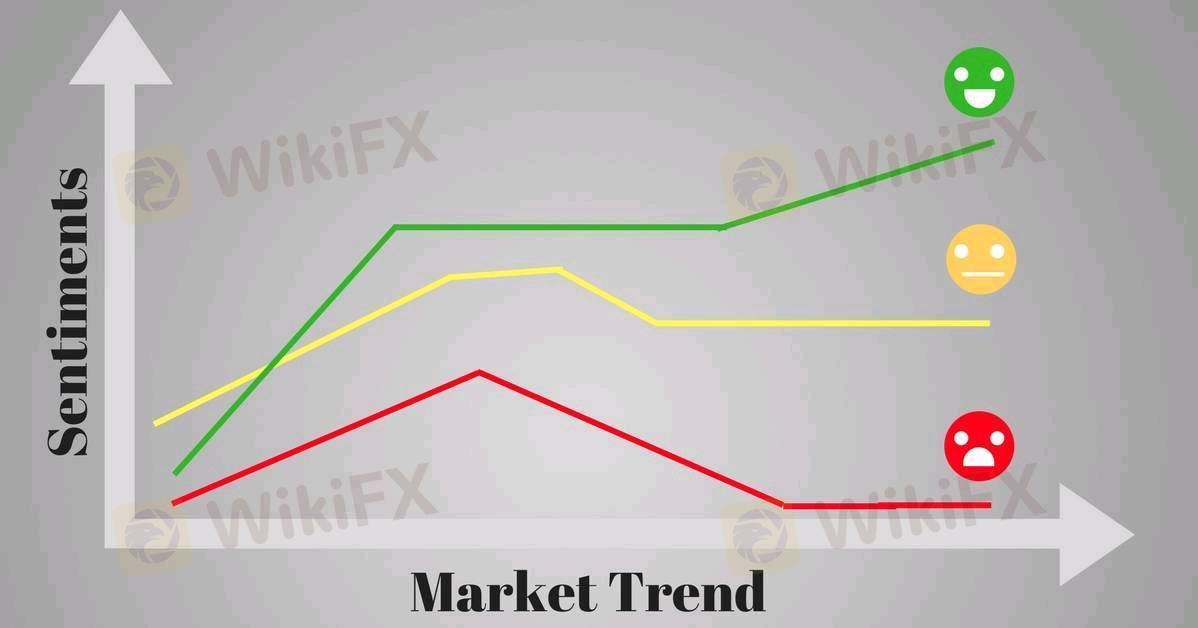
2025-01-31 19:54
NgànhSentiment analysis in Forex trading
#firstdealofthenewyearchewbacca#
Sentiment Analysis in Forex Trading
Sentiment analysis in Forex trading involves assessing the overall mood or positioning of traders in the market. It helps traders understand whether most participants are bullish (buying) or bearish (selling) on a particular currency pair.
---
Key Sentiment Indicators in Forex Trading
1. Commitment of Traders (COT) Report
Released weekly by the CFTC, it shows how commercial hedgers, large speculators, and retail traders are positioned.
If large speculators are heavily long on a currency, it signals bullish sentiment; if heavily short, it signals bearish sentiment.
Extreme positions often indicate a potential reversal.
2. Retail Trader Sentiment (Contrarian Indicator)
Many brokers provide retail trader positioning data (e.g., IG Client Sentiment, Myfxbook).
Retail traders tend to be wrong at major turning points, so extreme retail long positions may indicate a sell opportunity and vice versa.
3. Forex Market Sentiment Indexes
Sentiment indicators like DailyFX Sentiment Index, FXSSI, and Speculative Sentiment Index (SSI) provide insights into market positioning.
4. Options Market Data (Risk Reversals & Open Interest)
Options market data, such as risk reversals, can show whether traders are hedging against currency appreciation or depreciation.
High open interest in call options suggests bullish sentiment; high open interest in put options suggests bearish sentiment.
5. News Sentiment & Economic Reports
Analyzing central bank speeches, economic reports, and news headlines can reveal market expectations.
Positive surprises in economic data strengthen sentiment; negative surprises weaken it.
6. Volatility Index (VIX) & Risk-On/Risk-Off (RORO) Sentiment
The VIX (Fear Index) helps gauge risk appetite.
In risk-off environments (high VIX), traders buy safe-haven currencies like USD, JPY, and CHF.
In risk-on environments (low VIX), traders favor riskier currencies like AUD, NZD, and emerging market currencies.
---
How to Use Sentiment Analysis in Forex Trading
1. Identify Extreme Sentiment Levels
If sentiment is too bullish or bearish, it may signal a trend reversal (contrarian approach).
Example: If 90% of traders are long on EUR/USD, there’s a high chance of a price drop.
2. Confirm with Technical & Fundamental Analysis
Sentiment alone is not a trading signal. Combine it with support/resistance levels, moving averages, RSI, and economic data for stronger trade setups.
3. Trade with the Trend or Against It (Contrarian Strategy)
Trend Followers: If large institutions are increasing long positions, trade in the same direction.
Contrarian Traders: If retail traders are excessively long, consider shorting.
---
Example of Sentiment-Based Trade Setup
COT Report: Shows large speculators heavily short USD/JPY.
Retail Sentiment: 80% of traders are long (contrarian sell signal).
Technical Analysis: USD/JPY is at resistance.
Fundamental Analysis: BoJ signals policy tightening, supporting JPY strength.
Trade Idea: Short USD/JPY with a stop above resistance.
Thích 0
bossbaby6527
Trader
Bình luận phổ biến
Ngành
Có cao quá k?
Ngành
Xin ý kiến liberforex
Ngành
Đầu tư CDG
Ngành
Cắt lỗ
Ngành
Có nên chốt lỗ?
Ngành
Hỏi về dòng tiền
Phân loại diễn đàn

Nền tảng

Triển lãm

IB

Tuyển dụng

EA

Ngành

Chỉ số thị trường

Chỉ số
Sentiment analysis in Forex trading
 Nigeria | 2025-01-31 19:54
Nigeria | 2025-01-31 19:54#firstdealofthenewyearchewbacca#
Sentiment Analysis in Forex Trading
Sentiment analysis in Forex trading involves assessing the overall mood or positioning of traders in the market. It helps traders understand whether most participants are bullish (buying) or bearish (selling) on a particular currency pair.
---
Key Sentiment Indicators in Forex Trading
1. Commitment of Traders (COT) Report
Released weekly by the CFTC, it shows how commercial hedgers, large speculators, and retail traders are positioned.
If large speculators are heavily long on a currency, it signals bullish sentiment; if heavily short, it signals bearish sentiment.
Extreme positions often indicate a potential reversal.
2. Retail Trader Sentiment (Contrarian Indicator)
Many brokers provide retail trader positioning data (e.g., IG Client Sentiment, Myfxbook).
Retail traders tend to be wrong at major turning points, so extreme retail long positions may indicate a sell opportunity and vice versa.
3. Forex Market Sentiment Indexes
Sentiment indicators like DailyFX Sentiment Index, FXSSI, and Speculative Sentiment Index (SSI) provide insights into market positioning.
4. Options Market Data (Risk Reversals & Open Interest)
Options market data, such as risk reversals, can show whether traders are hedging against currency appreciation or depreciation.
High open interest in call options suggests bullish sentiment; high open interest in put options suggests bearish sentiment.
5. News Sentiment & Economic Reports
Analyzing central bank speeches, economic reports, and news headlines can reveal market expectations.
Positive surprises in economic data strengthen sentiment; negative surprises weaken it.
6. Volatility Index (VIX) & Risk-On/Risk-Off (RORO) Sentiment
The VIX (Fear Index) helps gauge risk appetite.
In risk-off environments (high VIX), traders buy safe-haven currencies like USD, JPY, and CHF.
In risk-on environments (low VIX), traders favor riskier currencies like AUD, NZD, and emerging market currencies.
---
How to Use Sentiment Analysis in Forex Trading
1. Identify Extreme Sentiment Levels
If sentiment is too bullish or bearish, it may signal a trend reversal (contrarian approach).
Example: If 90% of traders are long on EUR/USD, there’s a high chance of a price drop.
2. Confirm with Technical & Fundamental Analysis
Sentiment alone is not a trading signal. Combine it with support/resistance levels, moving averages, RSI, and economic data for stronger trade setups.
3. Trade with the Trend or Against It (Contrarian Strategy)
Trend Followers: If large institutions are increasing long positions, trade in the same direction.
Contrarian Traders: If retail traders are excessively long, consider shorting.
---
Example of Sentiment-Based Trade Setup
COT Report: Shows large speculators heavily short USD/JPY.
Retail Sentiment: 80% of traders are long (contrarian sell signal).
Technical Analysis: USD/JPY is at resistance.
Fundamental Analysis: BoJ signals policy tightening, supporting JPY strength.
Trade Idea: Short USD/JPY with a stop above resistance.
Thích 0
Tôi cũng muốn bình luận.
Đặt câu hỏi
0bình luận

Chưa có người bình luận, hãy là người bình luận đầu tiên

Đặt câu hỏi
Chưa có người bình luận, hãy là người bình luận đầu tiên